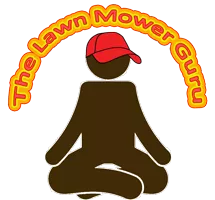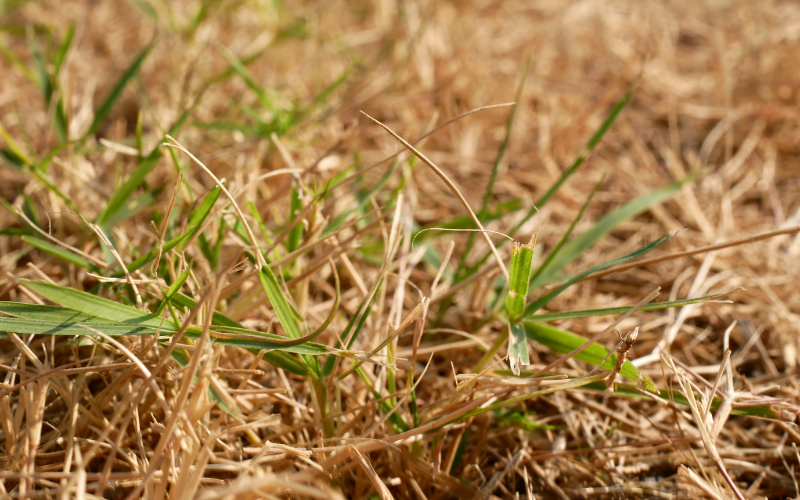Whether it’s been one week or seven weeks, your lawn turning brown after the recent acquisition and application of fresh sod is enough to give anyone heart palpitations. No one wants all that work and money to go down the drain. However, rarely will a yard turn brown all at once and if it does, that may mean you have an easier problem to fix than those with a patchy lawn. In any case, this article will help you identify what exactly is going on with your sod and why it’s turning brown.
Why Is My Sod Turning Brown? – The Short Answer
If your sod is turning brown, there are two main causes for it. Your sod is either lacking something (usually water) or something has prevented your sod from rooting properly. In both cases, there are solutions and ways to bring your lawn back from the verge of death.
Reasons Why Your Sod Might Be Turning Brown
The earlier you get started the more effective your treatment plan will be. Before you develop a treatment plan you need to know why your lawn is turning brown. Below I’m going to talk about the primary reasons your lawn is turning brown.
1) Not Enough Water
A lack of water is the primary cause of brown sod. If this is the case, not only with the grass feel rough, thin, and dry but if you can still lift the sod you may notice that the ground beneath it is dry and dusty. A lack of water can not only cause browning, but it may lead to sod that has begun to root to stop rooting or for new roots to die off as the moisture level needed to maintain them is not being bet.
2) An Inability to Root
Compacted soil can create an environment where your sod is unable to take root. If this is the case, the sod will turn brown as it is unable to get the nutrients it needs from the soil. If this is the case, you should be able to lift the sod from the ground easily and you may notice that the sod has developed new roots, but that they coil back up. The soil beneath may be hard and compact. Ideally, the soil should be able to be dug up with just your fingertips. If a hard tool is needed, the soil is not soft enough for ideal rooting conditions.
3) Air Pockets
Pockets of air under your sod may mimic the signs and symptoms of compacted soil. However, the soil, when tested, will be loose. Air pockets can be dealt with by using a roller in most cases or a thin, spiked aerator in severe cases. This condition can be solved without pulling up the sod. Other measures will need to be taken to support the sod before it will attempt to root again. You can read more about how to save sod after discovering air pockets in this piece I wrote on how to save dying sod.
4) Incompatible Temperature
If the conditions are too hot, sod can start to brown in as little as 5 days, even with light and regular watering throughout the day. As with a lack of water, the soil beneath the sod should seem dry to the touch in as little as an hour after a watering session has finished.
5) Soil pH Too High or Too Low
Just like with brown spots in a lawn, soil pH could be playing a role. It’s always important to check the pH of the soil after any additions have been made. For example, during soil preparation to lay sod, substances may be added to increase loft, increase nutrient content, or decrease compaction. After these additions, the soil pH may change depending on the material used. Untreated peat, for example, will create a more acidic soil while treated wood products and wood ash can raise the pH to create a more alkaline soil.
6) A Lack of Light
Placing sod made up of a grass type that needs long days of full sun in a shady spot is a recipe for brown sod, no matter how well cared for the sod is otherwise. If the only brown spots are those in the shade, this may indicate a need to reduce that shade or to seed a different grass type over your sod in these areas.
7) Over Fertilization
Too much fertilizer can “burn” sod. This is easy to do before your sod has taken root. If the sod seems to be browning from the tips of the blades, it has enough water, the temperature is relatively cool, and you have recently added fertilizer, you may have added too much.
8) Chemical Exposure
If you have completely ruled out all of the above possible causes, you may have some sort of chemical exposure on or under your sod. This can be residue from removing the previous lawn or the use of a herbicide during soil preparation.
Can Brown Sod Be Saved?
Yes, brown sod can be saved. This is especially true if you have brown patches or strips rather than an entire brown lawn. If you have installed the lawn yourself and are just starting to notice brown patches, you have time. Start by taking stock of the condition of your sod. Once you know what may have gone wrong, you can begin to get things back on track.
For a thorough explanation of what it takes to save a brown or browning lawn, check out these tips on how to save dying sod. They cover every cause we have mentioned here and a few more steps you can take to help ensure your new sod survives, develops roots, and thrives for many seasons to come.
Further, it’s worth mentioning that if your lawn is entirely brown and it has only been a week or 2 since the sod was delivered or placed, you should contact the company you purchased the sod from. Unless it is the middle of summer and the ground was both hot and dry when the sod was placed, browning in less than 4 days is cause for concern and a fully brown lawn in less than 2 weeks may indicate a severe installation problem or sod that wasn’t as fresh as it may have been advertised to be.



Leave a Reply